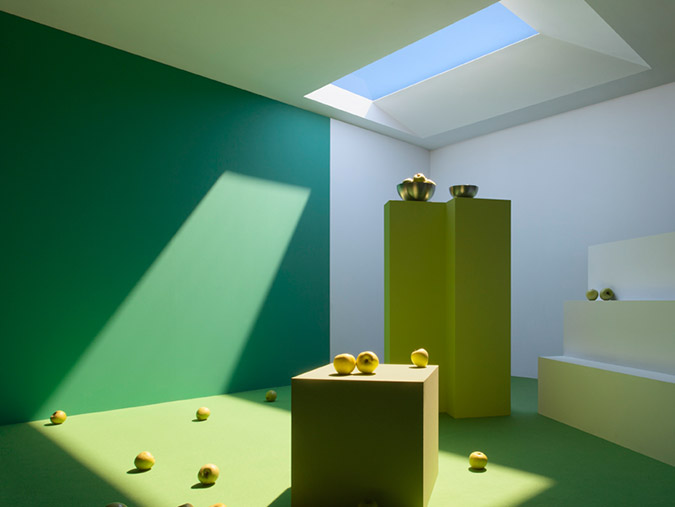An Italian technology firm, CoeLux, has recently introduced an entirely new type of indoor artificial lighting. CoeLux’s new LED lighting panels actually replicate the exact optical qualities of natural sunlight, making the light they emit indistinguishable from the real thing. Combined with advanced projection technology, these new lights can be used to create incredibly convincing windows and skylights in rooms that have no exterior walls whatsoever.
The key to this technology lies in recreating the effects that Earth’s atmosphere has on light as it passes through it. As light travels toward the surface of Earth, the individual wavelengths of the light diffuse within the atmosphere, an effect known scientifically as Rayleigh scattering. This, combined with specific conditions of intensity and coloration, gives natural light its characteristics. Until now, artificial lights have been unable to replicate these precise conditions. To further enhance the effect, the light can be set to change to recreate the specific lighting conditions of different places on Earth or different times of the day.
CoeLux’s light panels complete the illusion of natural light exposure by using a very advanced optical projection system that tricks the eye into perceiving distances within the light panel, much as it would perceive that the sky has a dimension of depth. This makes these lighting panels a perfect recreation of access to real daylight. In fact, even computerized light sensors have been unable to tell the difference.
CoeLux is currently focusing on perfecting the technology and bringing it to market. While it is extremely likely that this lighting technology will someday end up being used in home lighting, its first tests will likely be in the medical field, where it can be used to bring seemingly complete daylight into hospital rooms and nursing facilities. The firm also hopes to make the technology more affordable by mass producing their panels, thus lowering the unit price.



